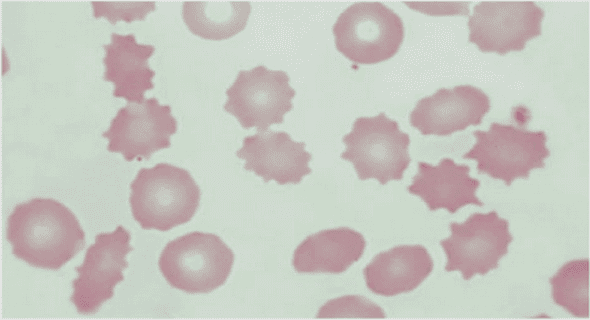(Downloads - 0)
For more info about our services contact : help@bestpfe.com
Table of contents
I. Chapter 1: General Introduction
1.1. Nucleic acids and general transcription
1.2 Gene expression and its regulation
1.2.1 The transcriptional machinery
1.2.2 Chromatin structure
1.3. The basic biology of cancer
1.3.1 Genes involved in carcinogenesis: Oncogenes and tumour-suppressor genes
1.4 Gene expression in cancer
1.4.1 Regulation of transcriptional by Ubiquitin
1.4.2 Ubiquitination and Transcription Factor activity
1.5 Introduction to the Golgi apparatus
1.5.1 Golgi apparatus in yeast
1.5.2 Signaling through the Sterol receptor element binding protein (SREBP) pathway
1.5.3 GOLPH3
1.5.4 GOLPH3 function and cancer
1.6. Human HID1 and its role in cancer development
1.7 Introduction to non-coding RNAs
1.7.1 Classes of ncRNA
1.7.1.1 Ribosomal and transfer RNAs
1.7.1.2 Regulatory ncRNAs
1.7.1.2.1 .LncRNAs
1.7.1.2.2 sncRNAs
1.7.1.2.2.1 miRNAs, siRNAs and piRNAs
1.7.1.2.3 snoRNAs
1.7.2 General features of ncRNA function
1.7.3 ncRNAs and cancer
1.7.4 Modeling small RNA structures and determining expression
1.8 RNAseq as a gene expression tool
1.9 S. pombe as a model organism
1.9.1 The cell cycle in S. pombe
1.10 Objectives of the work and strategy of the thesis
II. Chapter 2: Materials and Methods
2.1 Bioinformatic analysis and expression of Psc3 intronic sequences
2.1.1 Prediction of structural features within Psc3 introns
2.1.1.1 Identification of orthologous proteins in fungi
2.1.1.2 Identification of orthologous introns in fungal cohesins
2.1.1.3 Prediction of structure within introns of Psc3
2.1.2 Detection of ncRNA transcripts from Psc3 intronic sequences by PCR
2.1.2.1 Growth of S. pombe
2.1.2.2. Isolation of total RNA
2.1.2.3 Quality and quantity of RNA
2.1.2.4 Reverse Transcription
2.1.2.5 Design of primers for PCR
2.1.2.6 Polymerase Chain Reaction
2.1.2.7 Visualisation of PCR products by UREA-PAGE
2.2 Generation of mutant strains of S. pombe
2.2.1 Biological Material
2.2.2 Isolation of plasmid DNA from E. coli
2.2.3 Design of primers for amplification of transformation templates
2.2.4 Amplification and preparation of templates for gene replacement by homologous recombination.
2.2.5 Transformation of S. pombe cells
2.2.6 Verification of gene replacements
2.2.6.1 Isolation of genomic DNA from S. pombe
2.2.6.2 Mutant genotyping and expression analysis by PCR
2.2.6.3 Transmission electron microscopy
2.3 Characterisation of gene expression
2.3.1 Preparation of material and isolation of mRNA
2.3.2 Calculation of gene correlations
2.3.3 Primer design for quantitative PCR of genes correlated to the Hids
2.3.4 Gene expression by RT-qPCR
2.3.4.1 Analysis of RT-qPCR data
2.3.5 RNAseq and differential expression analysis
2.3.6 Small size selected RNAseq and novel ncRNA transcript detection
2.3.7 snoRNA prediction from novel ncRNA transcripts
2.4 General Data Analysis.
III. Chapter 3: Production of hidΔ mutants of S. pombe
3.1 Introduction
3.2 Results
3.2.1 Creation of mutants by gene replacement
3.2.2 Verification of gene deletion and replacement by PCR-genotyping and RT-PCR:
3.2.3 Construction of single mutants
3.2.3.1 Confirmation of strains lacking Hid1
3.2.3.2 Confirmation of strains lacking Hid2
3.2.3.3. Confirmation of strains lacking Hid3
3.2.4 Identification of Vector Control strains
3.2.5 Construction of double mutants
3.2.6 Initial physiological studies of gene-replacement mutants
3.2.6.1 Morphology of single mutants
3.2.6.2 Characterisation of growth properties.
3.2.4.3 Preliminary ultrastructural characterisation of the mutants
3.3 Discussion
IV. Chapter 4: Transcriptional properties of the hid1Δ and hid3Δ mutants of S. pombe
4.1. Introduction
4.2 Results
4.2.1 Evaluation of HsHID1 as a Tumour Suppressor gene
4.2.2 Comparative expression of hid genes using RT-qPCR
4.2.3 Evaluating the potential regulation of co-expressed genes by RT-PCR
4.2.4 Gobal analysis of gene expression changes in hid1Δ and hid3Δ by RNAseq
4.2.4.1 Strategy of sample selection and evaluation of RNA quality
4.2.4.2 RNAseq reveals greatest differences in gene expression for hid3Δ
4.2.4.3. Validation of RNAseq data by qRT-PCR
4.2.4.4. Analysis of correspondence with genetic interaction data provided in PomBase.
4.2.4.5. Finding biological function through gene ontololgies
4.2.4.6. Changes in expression of specific genes
4.3 Discussion
V. Chapter 5: Analysis of structural features of introns and their expression in fission yeast based on the pcs3 gene family
5.1. Introduction
5.2. Results
5.2.1. Identifying orthologous introns in fungal cohesins
5.2.2. Alignment of orthologous introns and secondary structure prediction
5.2.3. Investigation of intron expression by RT-PCR
5.2.4. Investigating the potential for intron expression by RNAseq
5.3 Discussion
VI. Chapter 6: General Discussion and Outlook
6.1 Outlook and Future Work


